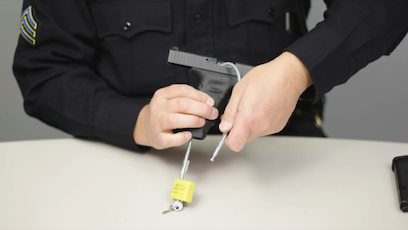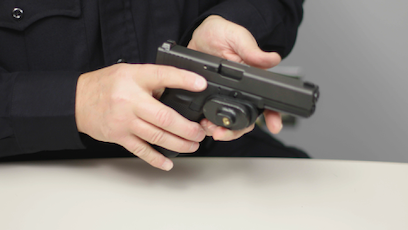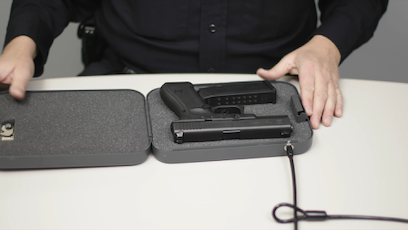Safe Firearm Storage
There are several basic steps to safe firearm storage that all firearm owners should follow:
- Store firearms unloaded.
- Store firearms and ammunition locked up using a locking device, and separate from each other.
- Assume that children know the location of firearms and ammunition in the home.
- Keep the keys or combinations to firearm locking devices inaccessible to children and other people at risk.
- Ask if there is a firearm where children play, whether at the patient’s home, or in someone else’s home.
The safest way to store firearms is unloaded and secured with a locking device.
Firearm owners can choose from a variety of locking devices, including trigger locks, cable locks, lock boxes, and gun safes. Cable locks and lock boxes are often most affordable, and some police departments have programs to distribute these types of locking devices for free.
The most appropriate locking device for each firearm owner depends on the type and intended use of the firearm(s) being secured. For example, a firearm kept in the home for self-defense might be best kept in a lock box that can be quickly opened with a code or using fingerprint technology.
If you're interested in more detail on safe storage devices, the King County Department of Health's LOK-IT-UP Campaign lists safe storage devices, how they work, their price ranges, and advantages and disadvantages.
You can also visit the Firearm Info for Patients page for direction to more materials on safe storage.
A variety of locking devices are available.
The most appropriate one depends on the type of firearm to be secured and the intended use of the firearm. Before securing the firearm with a locking device, make sure it's not loaded. In the examples below, locking devices are used to secure a semi-automatic pistol, which is a common type of handgun.
 A cable lock is one inexpensive firearm locking device option.
A cable lock is one inexpensive firearm locking device option.
Cable locks are among the least expensive options. Some law enforcement agencies give away cable locks for free. To use a cable lock, lock the action on the gun open. Then insert the cable through the magazine well and out the ejection port. Next, lock the cable and remove the key.
Cable locks may not prevent theft but they do prevent the firing or a firearm by an unauthorized user.
 Trigger locks are another inexpensive option for safer firearm storage.
Trigger locks are another inexpensive option for safer firearm storage.
A trigger lock is another inexpensive safe firearm storage device. To use a trigger lock, first separate the lock into two pieces. Next, insert the cylinder through the trigger guard behind the trigger so the trigger cannot be pulled. Then attach the second piece of the lock and remove the key. While trigger locks may not prevent theft, they do prevent unauthorized users from firing a firearm.
 Firearm stored in lock boxes should be stored unloaded.
Firearm stored in lock boxes should be stored unloaded.
A lock box is another safe storage device option. The safest way to store a firearm in a lock box is unloaded. The lock box you see here uses a combination, but lock boxes come with varying locking technologies, including a key, a key pad, and biometric or fingerprint technology.
Lock boxes may better protect against theft and they keep firearms out of sight. Some lock boxes, such as the one shown here, have a cable that allows users to fix the lock box to a secure post.
 Firearm safes may be useful to owners of multiple firearms as they may accommodate more than one firearm or firearms of different sizes.
Firearm safes may be useful to owners of multiple firearms as they may accommodate more than one firearm or firearms of different sizes.
Firearm safes are generally the most expensive option for safe storage. They can accommodate multiple firearms and firearms of different sizes. Like lock boxes, firearm safes use various locking technologies, including combinations, key pads, or biometric technology. The safest way to store firearms inside a firearm safe is unloaded and separate from ammunition.
Storage devices for other types of guns, like rifles or shotguns, look a little bit different, but in general they function the same way.
It's important that firearm owners keep the combinations or keys to firearm locking devices away from unauthorized users.

 Questions or comments?
Questions or comments?